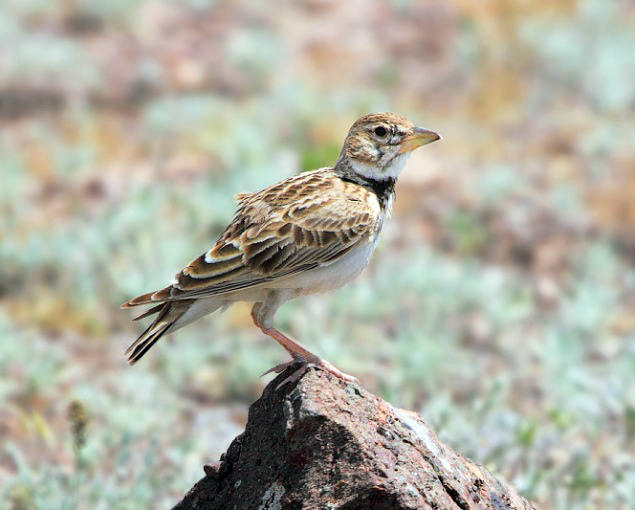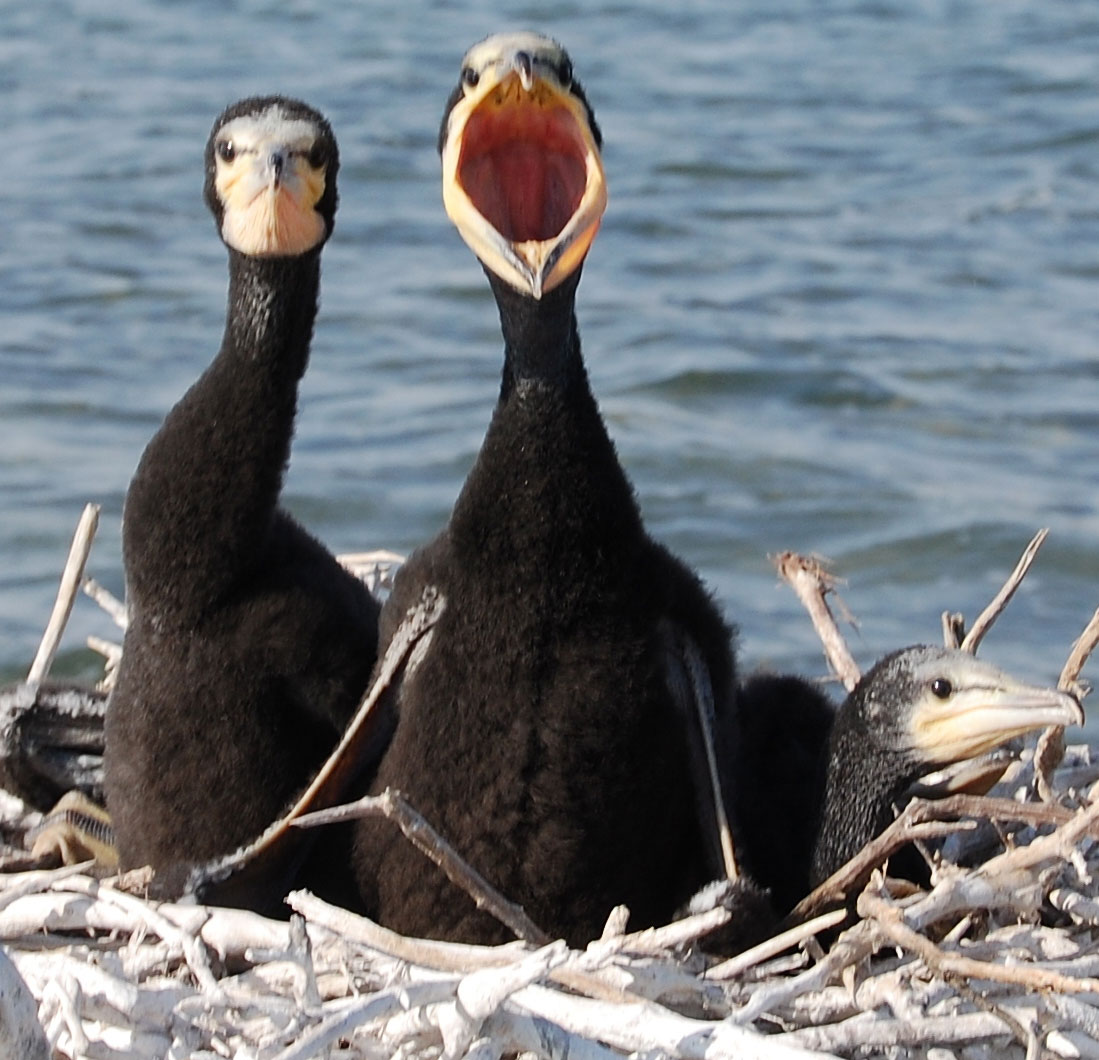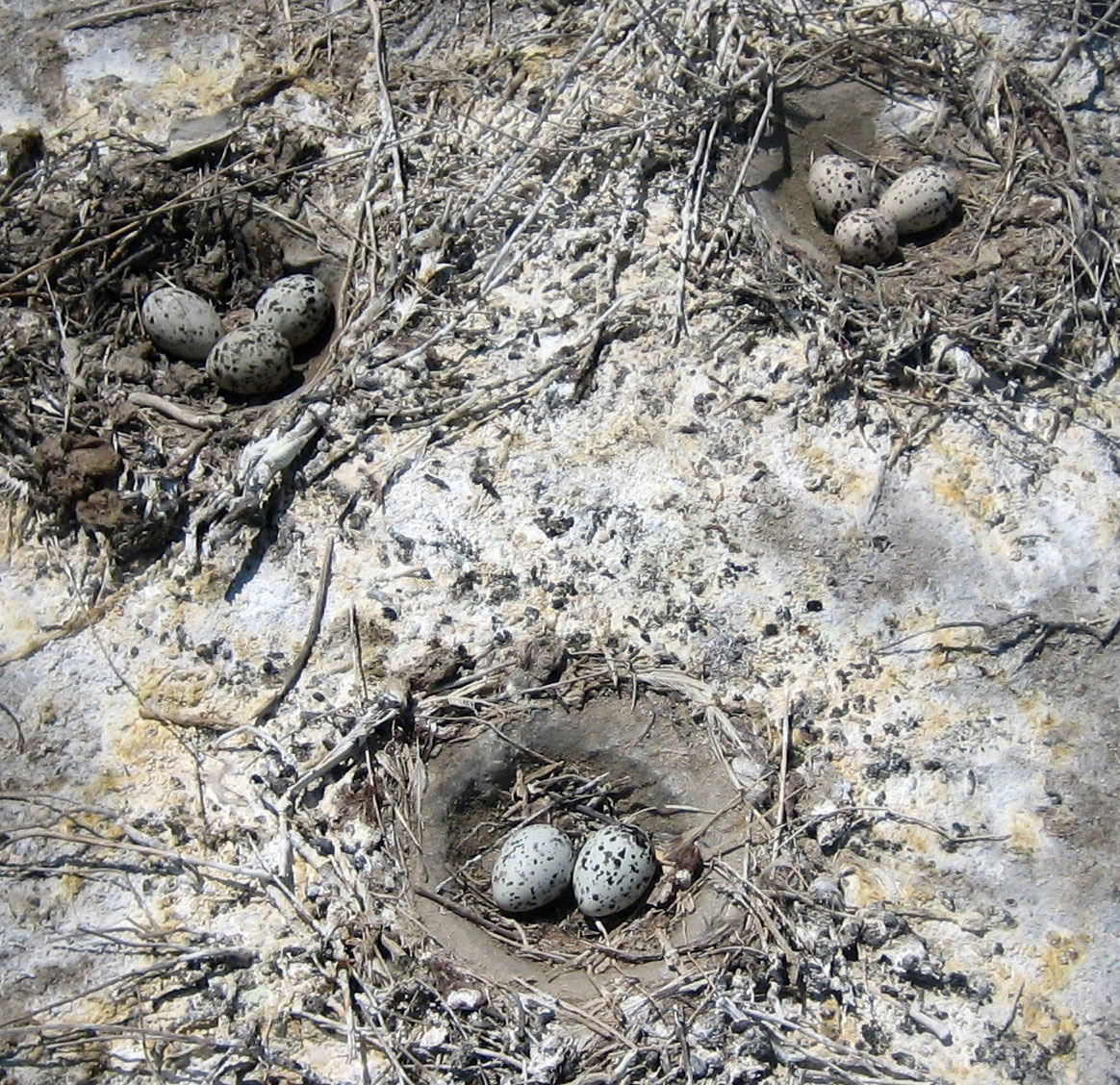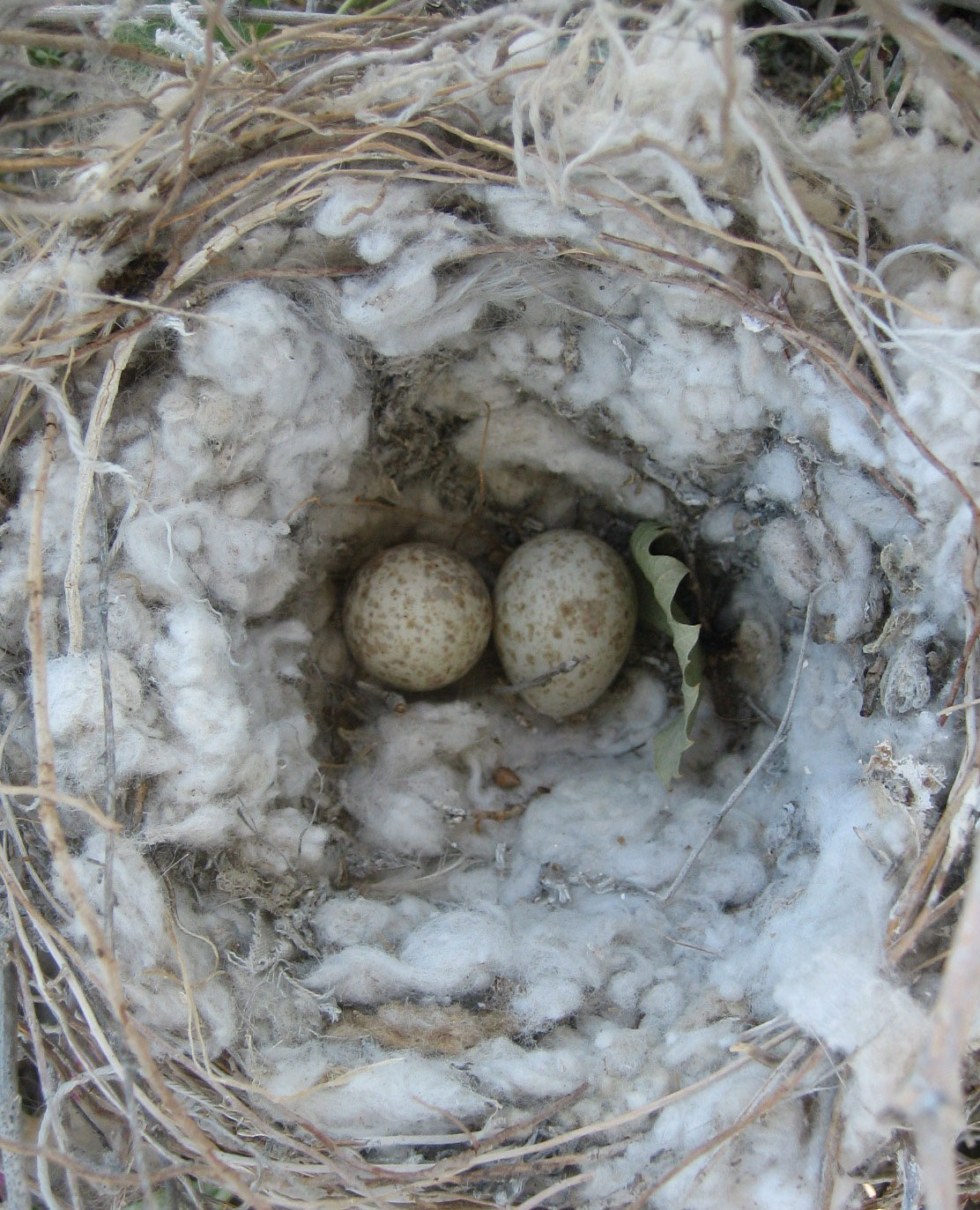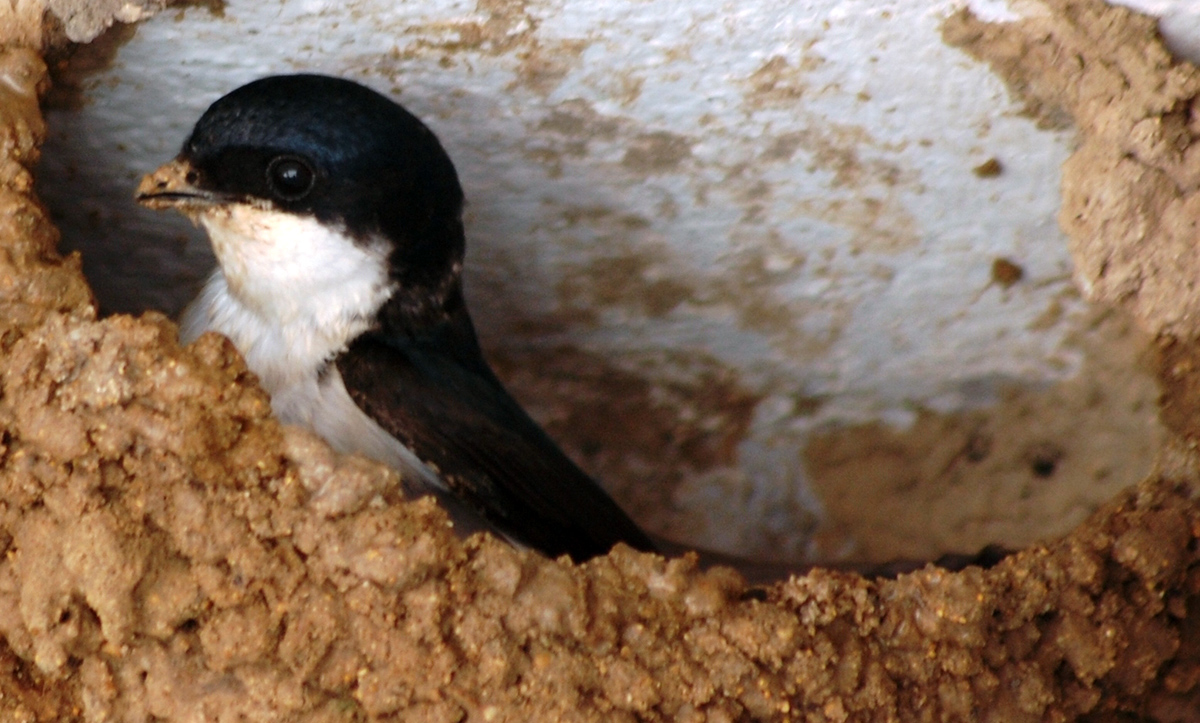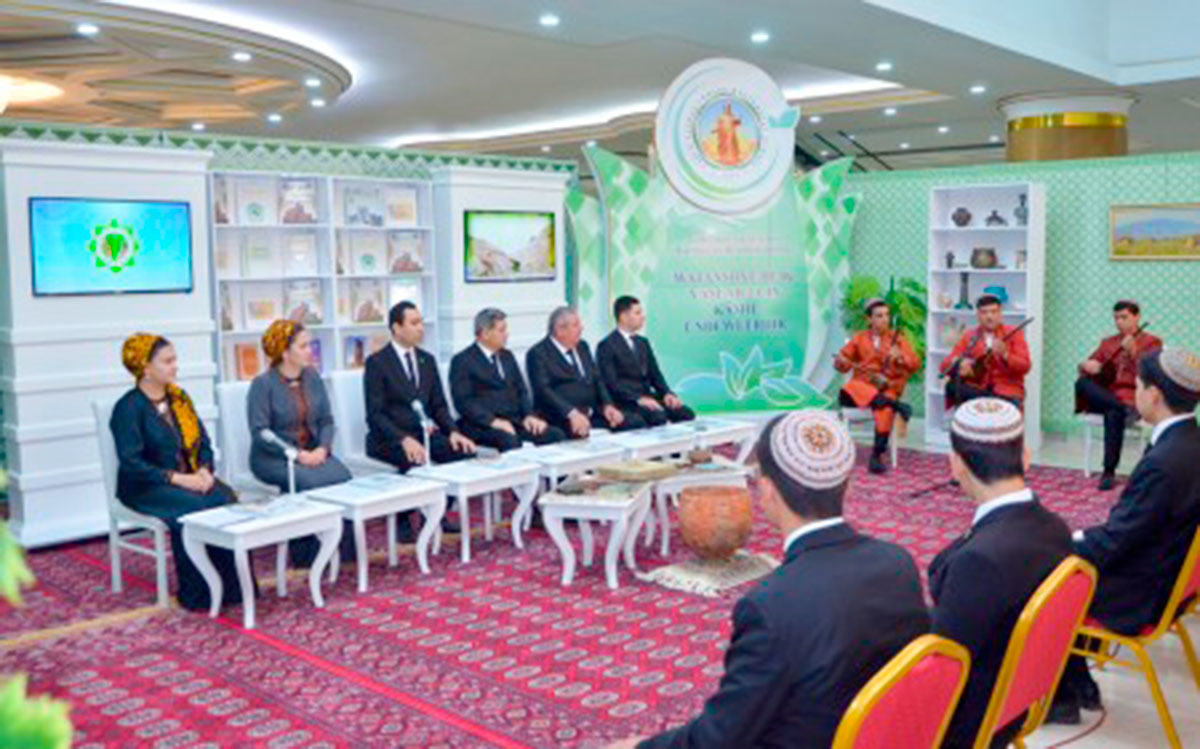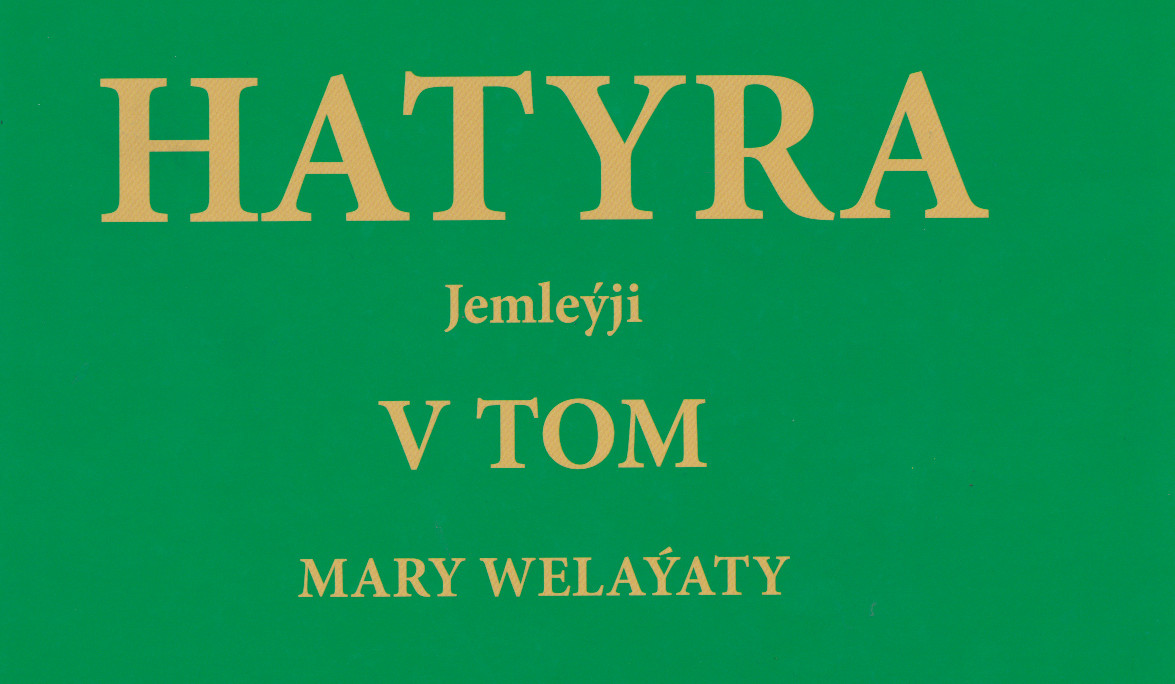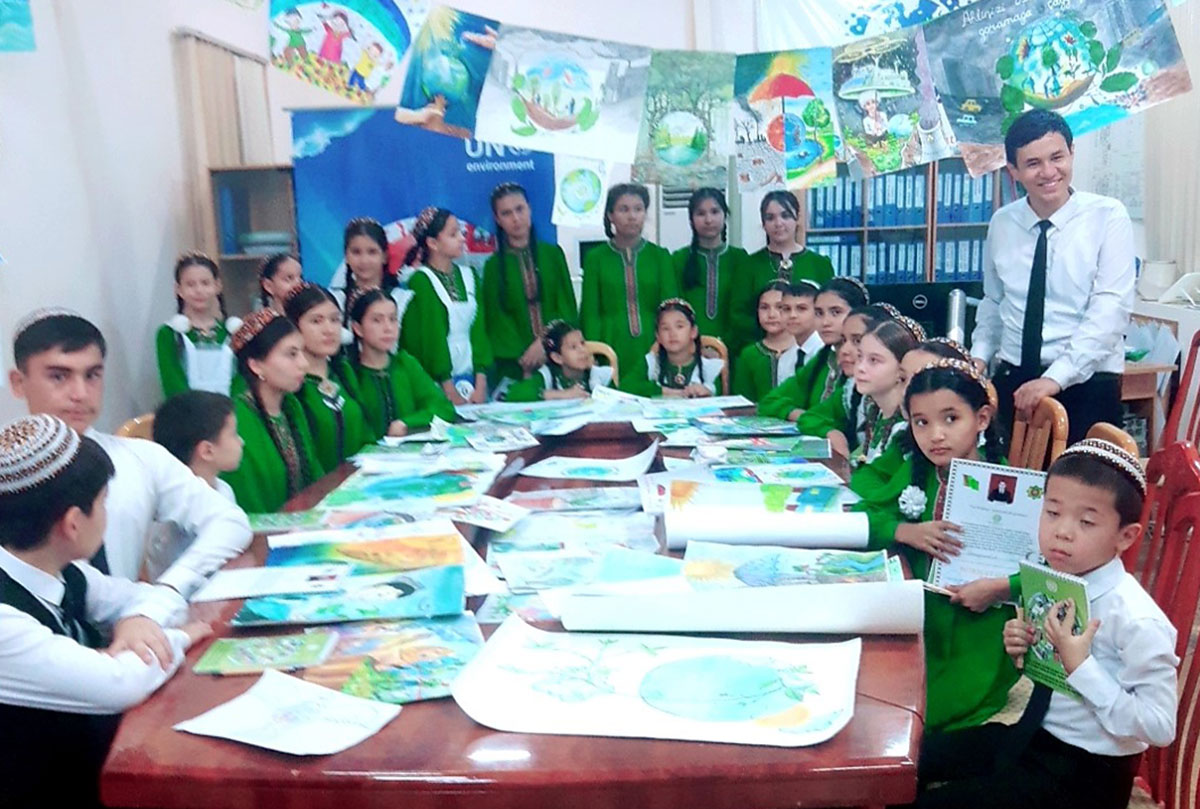The responsible season in the life of birds has come - nesting. The eagles and vultures come to that season as one of the first, later - herbivorous and fish-eating birds, and then - entomophagous, mainly feeding insects.
According to long-term observations, more than 110 species of birds are nesting at the seaboard. The small and large toadstools are building dwelling on the inner reservoirs and in thickets. The Great Cormorant has been nesting in recent years, not only on coastal cliffs and islands, but also on the remaining coastal bushes, telegraph poles and abandoned drilling platforms.
You can find nests of the top, quakva, yellow, Egyptian large and small, white, gray and red herons. Their dwellings are located on hummocks, creases or inclined branches in the form of hemispheres of different sizes. Cucumbers, pecans, mallards and rarely white-eyed blacks represent by anseriformes.
In addition to golden eagles and vultures on rocks, tall plants, in thickets, on power transmission lines, and sometimes in the residential sector are built nests of marsh lunis, kurgans, rare steppe eagles, steppe and common kestrel and balaban. In the foothills and low mountains, you can find dwellings of a desert partridge and a keklik.
As far as agricultural development of territories in areas of irrigated agriculture, there are populations of pheasants - one of the most beautiful birds in Turkmenistan. Reed lining of internal reservoirs and some parts of the Caspian coast serve as nesting places for cowherd boys.
On sandy scythes and islands, in holes, occasionally lined with dry grass, fragments of shells and pebbles, nest small, marine and large zuyki. In the swampy areas, sandy hummocks are occupied by long-legged stilt-dogs, white-tailed pagalitses and meadowholes, less often by noisy wader magpies, a few herbivores and silk-clavicles.
Impress the colonial nest of gulls, when dozens and even thousands of nests literally touch each other. The most cautious - black-headed giggles and laughter - avoid neighborhood with a man. Common accumulations of sea doves, variegated and river terns, especially in the Khazar Reserve.
From the leading twilight-night way of life of birds, you can meet nests of an eagle owl, and the house owl inhabited almost the entire Caspian region, including the outskirts of populated areas.
There are nests of white and black swifts on the coastal rocks, the latter have become inhabitants of cities, and their number reaches tens of thousands. Habitually - brightly colored representatives of the Raksh squad. Moreover, hoopoes build dwellings in cracks in rocks, among stones, hollows and buildings, while kingfishers, caterpillars, green and golden chicks nest in burrows.
The most numerous - passerines settle nests on land, in burrows, on bushes and trees, windows and cornices, in entrances and attics, dominating in the natural, agricultural and industrial landscapes.
According to long-term observations, more than 110 species of birds are nesting at the seaboard. The small and large toadstools are building dwelling on the inner reservoirs and in thickets. The Great Cormorant has been nesting in recent years, not only on coastal cliffs and islands, but also on the remaining coastal bushes, telegraph poles and abandoned drilling platforms.
You can find nests of the top, quakva, yellow, Egyptian large and small, white, gray and red herons. Their dwellings are located on hummocks, creases or inclined branches in the form of hemispheres of different sizes. Cucumbers, pecans, mallards and rarely white-eyed blacks represent by anseriformes.
In addition to golden eagles and vultures on rocks, tall plants, in thickets, on power transmission lines, and sometimes in the residential sector are built nests of marsh lunis, kurgans, rare steppe eagles, steppe and common kestrel and balaban. In the foothills and low mountains, you can find dwellings of a desert partridge and a keklik.
As far as agricultural development of territories in areas of irrigated agriculture, there are populations of pheasants - one of the most beautiful birds in Turkmenistan. Reed lining of internal reservoirs and some parts of the Caspian coast serve as nesting places for cowherd boys.
On sandy scythes and islands, in holes, occasionally lined with dry grass, fragments of shells and pebbles, nest small, marine and large zuyki. In the swampy areas, sandy hummocks are occupied by long-legged stilt-dogs, white-tailed pagalitses and meadowholes, less often by noisy wader magpies, a few herbivores and silk-clavicles.
Impress the colonial nest of gulls, when dozens and even thousands of nests literally touch each other. The most cautious - black-headed giggles and laughter - avoid neighborhood with a man. Common accumulations of sea doves, variegated and river terns, especially in the Khazar Reserve.
From the leading twilight-night way of life of birds, you can meet nests of an eagle owl, and the house owl inhabited almost the entire Caspian region, including the outskirts of populated areas.
There are nests of white and black swifts on the coastal rocks, the latter have become inhabitants of cities, and their number reaches tens of thousands. Habitually - brightly colored representatives of the Raksh squad. Moreover, hoopoes build dwellings in cracks in rocks, among stones, hollows and buildings, while kingfishers, caterpillars, green and golden chicks nest in burrows.
The most numerous - passerines settle nests on land, in burrows, on bushes and trees, windows and cornices, in entrances and attics, dominating in the natural, agricultural and industrial landscapes.




